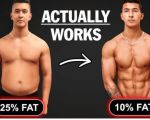The Influence of Social Media on Fitness Culture in the United States
Over the last decade, social media has fundamentally reshaped nearly every aspect of our lives, and one of the areas most significantly impacted is fitness culture. From the rise of fitness influencers to the surge in online workouts and virtual communities, platforms like Instagram, YouTube, and TikTok have become the main stage for fitness enthusiasts of all levels. As someone who has personally experienced the shift in how people approach fitness, I want to share with you how social media is changing the way we think about health and fitness in the United States.
The Rise of Fitness Influencers
When I first started my fitness journey, the options for getting fitness advice were pretty straightforward. You either joined a gym or bought a fitness DVD (remember those?). However, social media has made it possible for anyone to become a fitness influencer, and this has significantly transformed how people access fitness content. Platforms like Instagram and TikTok have given rise to a new generation of fitness experts who are not bound by traditional qualifications but instead are shaped by their ability to create engaging content that resonates with large audiences.
Today, millions of people look to influencers for workout routines, nutrition tips, and inspiration. These influencers are often seen as more approachable and relatable than traditional fitness experts. They come from all walks of life and share their struggles, successes, and fitness routines in a very personal way, which builds trust with their audiences. This shift from traditional fitness marketing to influencer-driven content has allowed for a more inclusive fitness culture, where people from different backgrounds feel represented and motivated.
The Impact of Social Media on Fitness Trends
Social media has also played a significant role in shaping fitness trends. A great example of this is the explosive growth of online workout challenges. Hashtags like #30DaySquatChallenge or #PushUpChallenge have gone viral, encouraging people to participate in fitness activities that they might not have considered before. What makes these trends so powerful is the sense of community they create. You’re not just working out alone; you're participating in a global movement where people from all corners of the world are doing the same thing and sharing their progress.
These trends have democratized fitness in many ways. What was once reserved for the elite athletes or those with access to expensive gyms is now available to anyone with a smartphone and internet connection. Virtual challenges, like the #RunWithMe challenge on Instagram, allow individuals to compete with or support one another regardless of their physical location. This has opened up fitness to a wider audience and created a sense of belonging and shared accomplishment.
Online Fitness Communities: Creating Support and Accountability
One of the most transformative impacts of social media on fitness culture is the rise of online fitness communities. Whether it's a Facebook group dedicated to a specific workout program or a hashtag that unites thousands of people who are all working toward a common goal, these communities have become an integral part of fitness culture. For me personally, I’ve found that being part of an online fitness community has made me more accountable and consistent in my workouts. The support and motivation I receive from others in these communities have pushed me to continue even on days when I feel like skipping my workout.
These online communities are not just about motivation—they're about support and real connection. People share their personal struggles, whether it’s overcoming body image issues, dealing with an injury, or balancing fitness with other life responsibilities. These shared experiences foster empathy and create strong bonds between members of the community. As a result, many people find that they are more likely to stick to their fitness goals because they feel a sense of belonging and accountability.
Virtual Workouts: The Future of Fitness
As a busy individual who struggled to find time for the gym, I was thrilled to see how social media platforms like Instagram Live and YouTube made it possible to join live workout sessions from the comfort of my home. Virtual workouts have become a game-changer, especially for people who can't or don't want to go to a traditional gym. Fitness influencers now host live workout sessions, and many of them are free or available at a fraction of the cost of a gym membership. Some even offer personalized training programs that are accessible to people worldwide.
The flexibility that virtual workouts provide has changed the fitness landscape. No longer are people confined to a set schedule at a gym; they can now join a workout class whenever it fits into their busy day. This convenience factor has made fitness more accessible to people of all fitness levels, including those who are just starting their journey or those who may have been intimidated by the idea of working out in a gym setting. Social media has created a world where fitness is not a one-size-fits-all experience, but a personalized journey that can be shaped by each individual’s needs and goals.
The Dark Side of Social Media and Fitness
While social media has revolutionized the fitness world in many positive ways, it’s also important to acknowledge some of the negative aspects that have emerged. One of the most concerning issues is the rise of unrealistic body standards. Fitness influencers often post carefully curated photos that may not accurately reflect their real lives or the effort that goes into achieving their physique. This can create unrealistic expectations for others, particularly young people who are still forming their body image.
Moreover, social media platforms are often filled with quick-fix solutions and fad diets, some of which can be harmful to your health. There’s always a new trend, from extreme detox diets to weight-loss pills, that promises rapid results. While these solutions may seem tempting, they often do not provide sustainable, long-term health benefits and can lead to physical or mental health issues. It’s important to approach social media fitness content with a critical eye and to consult with professionals when making significant changes to your fitness or diet plan.
In conclusion, social media has dramatically impacted fitness culture in the United States. It has made fitness more accessible, created a sense of community, and given rise to a new generation of fitness influencers. However, it’s also essential to recognize the potential pitfalls, such as unrealistic body standards and dangerous trends. As with any tool, it’s important to use social media wisely and to stay informed and mindful of the content you consume. The future of fitness is digital, but we must navigate it with care and awareness.








